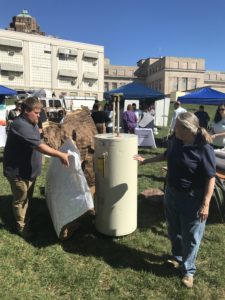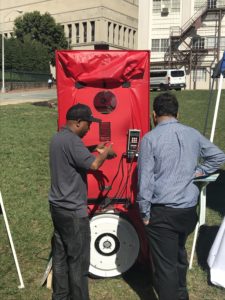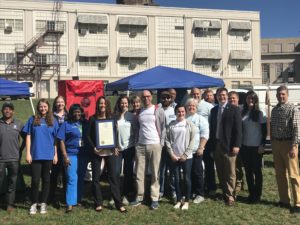
October 30 is known nationally as Weatherization Day. Today and throughout the month of October events have been planned to recognize the importance of the Weatherization Assistance Program (WAP) in improving the lives of low-income families and our communities. Governor’s proclamations, educational events, press stories, and demonstration projects highlight the ways in which WAP generates energy savings, improves the comfort and safety of homes, and promotes workforce development, among other benefits. Earlier this month, NASCSP had the opportunity to attend an event in Virginia that showcased weatherization technologies and workers on the State Capitol grounds. Today we are headed to a local Weatherization Day expo in the historic Anacostia neighborhood of Washington D.C. Events like these elevate the profile of WAP and magnify its impact in our local communities.

One of the first things I learned on the job as an installer was that the house operates as a system. The appliances, building materials and occupants interact and work together to impact the performance of the whole building. I was fascinated by building science and loved to solve the energy mysteries and challenges presented by each home we visited. Technology often takes center stage in weatherization, and that is certainly what drew me in to the field work. But two things kept me coming back each day: seeing the results of my work first-hand, both in the data collected at the home and the gratitude from a customer at the end of the job, and the relationships I developed with my colleagues. When I reflect on my experience in weatherization I always return to this: it is the people that make this program great. I continue to be inspired by the many dedicated, knowledgeable professionals working together to impact our performance and quality of services. As I have transitioned into new roles in the program and spend more time behind a desk than in the field, I find similar themes apply to the work. The WAP as a system is complex and relies on many different entities and individuals working together to deliver high quality services and continuously improve our performance. To the installers and local agency staff, state managers, private contractors, training centers, policy makers and researchers, and all others who play a critical role in administering and implementing WAP, thank you for the work you do every day!

The WAP is heading into its 43rd year with an increased federal budget compared to last program year. These federal funds have enabled states to leverage over $350 million in non-federal funds for residential energy efficiency programs. The strong support WAP continues to receive from our stakeholders and policy makers is a testament to the great work of our weatherization professionals, and the positive impact WAP continues to have while fulfilling its mission to improve the energy efficiency of homes while ensuring the health and safety of the low-income families.





